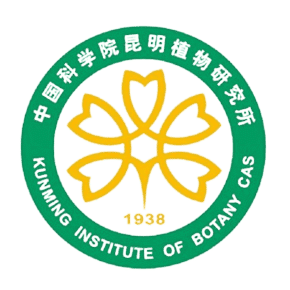Description
27-Hydroxycholesterol (27-HC), is an endogenous oxysterol formed by the hydroxylation of cholesterol by sterol 27-hydroxylase (CYP27A1). BIORLAB offers high-purity 27-hydroxycholesterol (≥98%) produced through advanced synthesis and purification technologies. As the most abundant oxysterol in human circulation, 27-HC plays crucial roles in cholesterol homeostasis, steroid hormone modulation, and various pathophysiological processes, making it an essential tool for research in cardiovascular disease, neurodegenerative disorders, cancer, and metabolic conditions.
Technical Specifications
- Appearance: White to off-white crystalline powder
- Purity: ≥98% (HPLC)
- Melting Point: 178-180°C
- Optical Rotation: [α]D20 +21° (c 1.0, CHCl3)
- UV Absorption: λmax at 205 nm in methanol
- Solubility: Insoluble in water; soluble in ethanol, methanol, chloroform, DMSO
IUPAC Name: (3S,8S,9S,10R,13R,14S,17R)-17-[(2R,6R)-7-hydroxy-6-methylheptan-2-yl]-10,13-dimethyl-2,3,4,7,8,9,11,12,14,15,16,17-dodecahydro-1H-cyclopenta[a]phenanthren-3-ol
InChI: InChI=1S/C27H46O2/c1-18(17-28)6-5-7-19(2)23-10-11-24-22-9-8-20-16-21(29)12-14-26(20,3)25(22)13-15-27(23,24)4/h8,18-19,21-25,28-29H,5-7,9-17H2,1-4H3/t18-,19-,21+,22+,23-,24+,25+,26+,27-/m1/s1
InChIKey: FYHRJWMENCALJY-YSQMORBQSA-N
Canonical SMILES: CC(CCCC(C)C1CCC2C1(CCC3C2CC=C4C3(CCC(C4)O)C)C)CO
Isomeric SMILES: C[C@H](CCC[C@@H](C)[C@H]1CC[C@@H]2[C@@]1(CC[C@H]3[C@H]2CC=C4[C@@]3(CC[C@@H](C4)O)C)C)CO
Synonyms: 27-hydroxycholesterol; 20380-11-4; (25R)-26-Hydroxycholesterol; (25R)-Cholest-5-ene-3beta,26-diol; Cholest-5-ene-3beta,27-diol; cholest-(25R)-5-en-3beta,26-diol; 6T2NA6P5SQ; 27-hydroxy-cholesterol(25R); …
Botanical Source:
Storage and Handling Requirements
- Store at -20°C in airtight containers
- Protect from light and oxygen (sensitive to oxidation)
- Allow container to reach room temperature before opening
- Stock solutions can be prepared in ethanol, methanol, or DMSO (1-5 mg/ml recommended)
- For maximum stability, store solutions at -80°C under inert gas
- Avoid repeated freeze-thaw cycles
- Stable for 12 months when properly stored
- Working solutions should be prepared fresh
- Oxygen-free environment recommended for long-term storage
Research Applications
Cardiovascular Research
- Atherosclerosis Studies: Essential for investigating cholesterol transport and foam cell formation mechanisms
- Reverse Cholesterol Transport Research: Critical for understanding macrophage cholesterol efflux
- Endothelial Function Investigations: Important for studying endothelial dysfunction and vascular inflammation
- Cholesterol Homeostasis Research: Valuable for investigating bile acid synthesis regulation
- Cardiovascular Risk Assessment: Potential biomarker for atherosclerotic disease progression
Neuroscience Research
- Alzheimer’s Disease Studies: Crucial for investigating blood-brain barrier transport and amyloid-β metabolism
- Neurodegenerative Disease Research: Important for understanding cholesterol metabolism in the brain
- Neuroimmune Function Studies: Valuable for investigating microglial activation and neuroinflammation
- Cognitive Function Research: Essential for studying the impact of oxysterols on cognitive processes
- Cerebrovascular Research: Important for investigating stroke risk factors and mechanisms
Cancer Biology
- Breast Cancer Studies: Critical for understanding estrogen receptor modulation in hormone-dependent cancers
- Liver Cancer Research: Valuable for investigating hepatocellular carcinoma development and progression
- Prostate Cancer Studies: Important for understanding androgen receptor signaling modulation
- Molecular Oncology Research: Essential for studying cholesterol metabolism in cancer cells
- Cancer Therapy Development: Potential target for therapeutic interventions in hormone-dependent cancers
Endocrinology Research
- Steroid Hormone Modulation Studies: Important for understanding estrogen receptor signaling
- Metabolic Disease Research: Valuable for investigating insulin resistance and glucose metabolism
- Nuclear Receptor Signaling Studies: Essential for LXR activation research
- Lipid Metabolism Research: Critical for understanding cholesterol homeostasis regulation
- Hormone-Dependent Disease Studies: Important for studying breast and prostate cancer mechanisms
Biological Activities
- Cholesterol Transport: Facilitates reverse cholesterol transport from peripheral tissues to the liver
- LXR Activation: Functions as an endogenous ligand for liver X receptors, regulating lipid metabolism
- Bile Acid Synthesis: Serves as a precursor for bile acid formation through the alternative pathway
- Estrogen Receptor Modulation: Acts as a selective estrogen receptor modulator (SERM) with tissue-specific effects
- Blood-Brain Barrier Regulation: Influences cholesterol flux across the blood-brain barrier
- Vascular Effects: Modulates endothelial function and vascular tone
- Immune Modulation: Affects macrophage function and inflammatory responses
- Amyloid-β Metabolism: Influences amyloid-β production and clearance in the brain
Biochemical and Physiological Functions
- Cholesterol Homeostasis: Regulates intracellular cholesterol levels and facilitates cholesterol excretion
- Transcriptional Regulation: Modulates gene expression through activation of nuclear receptors (LXRs)
- Enzyme Regulation: Inhibits HMG-CoA reductase activity, reducing cholesterol synthesis
- Membrane Function: Influences membrane fluidity and organization
- Cell Signaling: Modulates various signaling pathways including MAPK and Akt
- Immune Function: Regulates inflammatory responses in macrophages and other immune cells
- Neuroprotection/Neurotoxicity: Demonstrates dual effects depending on concentration and context
- Hormone Regulation: Influences estrogen and androgen receptor signaling
Pathophysiological Significance
- Atherosclerosis: Elevated levels associated with coronary artery disease and atherosclerotic plaque formation
- Alzheimer’s Disease: Altered levels linked to amyloid-β accumulation and cognitive decline
- Cancer Progression: May promote tumor growth in breast and prostate cancers through hormone receptor modulation
- Cerebrotendinous Xanthomatosis: Defective 27-hydroxylation leads to cholestanol accumulation and neurological symptoms
- Metabolic Disorders: Implicated in insulin resistance and metabolic syndrome
- Autoimmune Conditions: Involved in inflammatory processes in multiple sclerosis and other autoimmune disorders
- Aging: Age-related increases may contribute to various degenerative diseases
Source and Production
- Synthesized through advanced stereochemically-controlled processes
- Structure confirmed through comprehensive spectroscopic analysis
- Absolute configuration validated by X-ray crystallography
- Produced under strict quality control procedures
- Available in various isotopically labeled forms for metabolic studies
Quality Assurance
BIORLAB’s 27-hydroxycholesterol undergoes:
- Comprehensive HPLC analysis for purity determination (≥98%)
- Structure verification by 1H and 13C NMR spectroscopy
- Mass spectrometry confirmation
- UV-Vis spectral characterization
- Stereochemical configuration confirmation
- Water content analysis
- Residual solvent screening
- Certificate of Analysis with batch-specific data
Research Value
- Reference Standard: Essential for analytical method development and oxysterol profiling
- Biochemical Tool: Valuable for investigating cholesterol metabolism and transport
- Signaling Mediator: Important for studying nuclear receptor activation mechanisms
- Biomarker Candidate: Potential diagnostic indicator for various pathological conditions
- Therapeutic Target: Promising target for drug development in multiple disease states
Technical Support Services
- Method development assistance
- Analytical reference standard
- Custom synthesis options
- Bulk quantities available
- Technical consultation
For research use only. Not for human consumption or clinical use. All BIORLAB research compounds are intended solely for laboratory research applications.
For detailed specifications, bulk quantities, or technical support, please contact BIORLAB’s scientific team.






